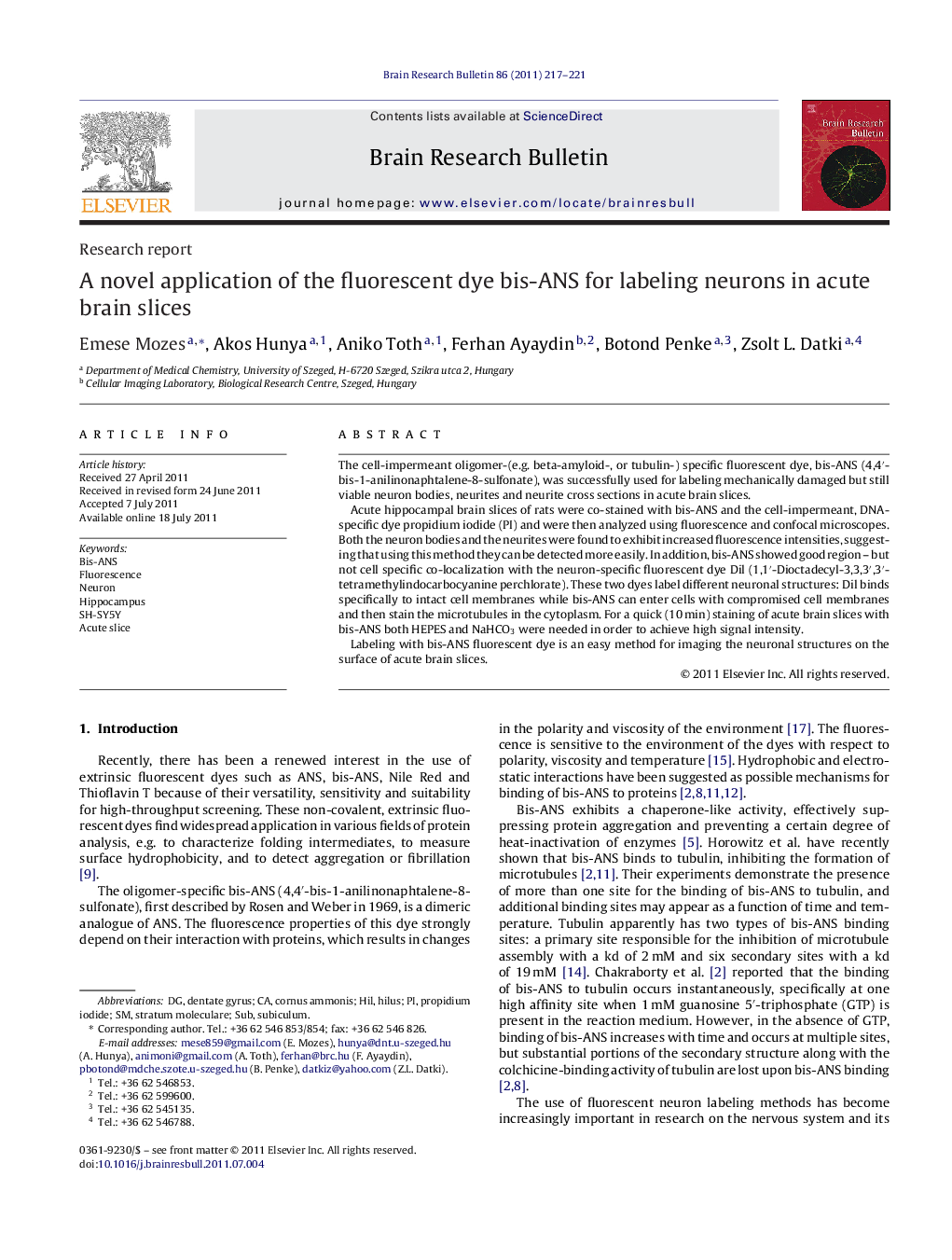| کد مقاله | کد نشریه | سال انتشار | مقاله انگلیسی | نسخه تمام متن |
|---|---|---|---|---|
| 6261974 | 1613273 | 2011 | 5 صفحه PDF | دانلود رایگان |

The cell-impermeant oligomer-(e.g. beta-amyloid-, or tubulin-) specific fluorescent dye, bis-ANS (4,4â²-bis-1-anilinonaphtalene-8-sulfonate), was successfully used for labeling mechanically damaged but still viable neuron bodies, neurites and neurite cross sections in acute brain slices.Acute hippocampal brain slices of rats were co-stained with bis-ANS and the cell-impermeant, DNA-specific dye propidium iodide (PI) and were then analyzed using fluorescence and confocal microscopes. Both the neuron bodies and the neurites were found to exhibit increased fluorescence intensities, suggesting that using this method they can be detected more easily. In addition, bis-ANS showed good region - but not cell specific co-localization with the neuron-specific fluorescent dye Dil (1,1â²-Dioctadecyl-3,3,3â²,3â²-tetramethylindocarbocyanine perchlorate). These two dyes label different neuronal structures: Dil binds specifically to intact cell membranes while bis-ANS can enter cells with compromised cell membranes and then stain the microtubules in the cytoplasm. For a quick (10Â min) staining of acute brain slices with bis-ANS both HEPES and NaHCO3 were needed in order to achieve high signal intensity.Labeling with bis-ANS fluorescent dye is an easy method for imaging the neuronal structures on the surface of acute brain slices.
⺠Cell-impermeant oligomer specific fluorescent dye, bis-ANS. ⺠Labeling mechanically damaged but still viable neurons in acute brain slices. ⺠Both the neuron bodies and the neurites were found to exhibit bis-ANS signals.
Journal: Brain Research Bulletin - Volume 86, Issues 3â4, 10 October 2011, Pages 217-221